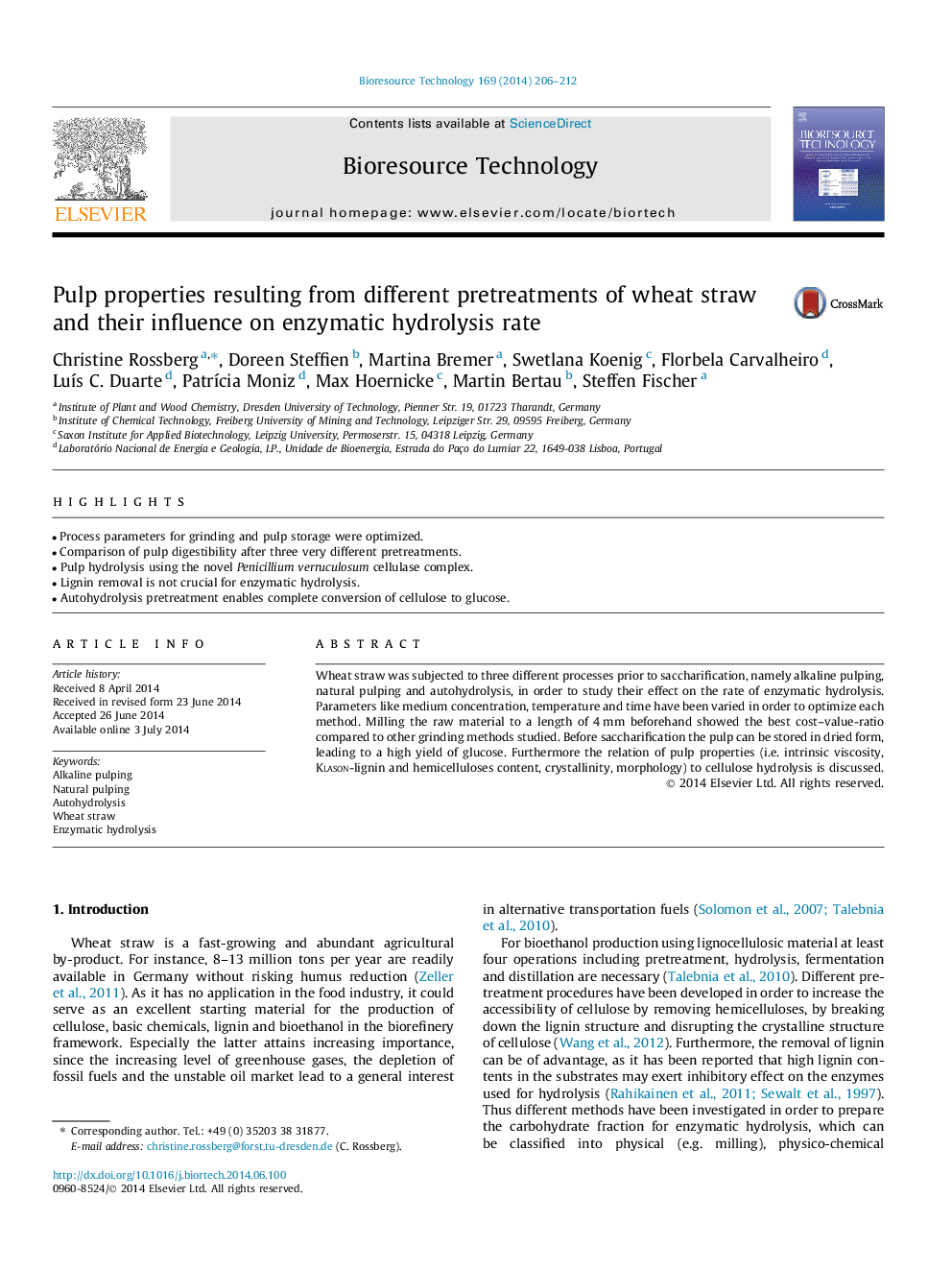| Article ID | Journal | Published Year | Pages | File Type |
|---|---|---|---|---|
| 680660 | Bioresource Technology | 2014 | 7 Pages |
•Process parameters for grinding and pulp storage were optimized.•Comparison of pulp digestibility after three very different pretreatments.•Pulp hydrolysis using the novel Penicillium verruculosum cellulase complex.•Lignin removal is not crucial for enzymatic hydrolysis.•Autohydrolysis pretreatment enables complete conversion of cellulose to glucose.
Wheat straw was subjected to three different processes prior to saccharification, namely alkaline pulping, natural pulping and autohydrolysis, in order to study their effect on the rate of enzymatic hydrolysis. Parameters like medium concentration, temperature and time have been varied in order to optimize each method. Milling the raw material to a length of 4 mm beforehand showed the best cost–value-ratio compared to other grinding methods studied. Before saccharification the pulp can be stored in dried form, leading to a high yield of glucose. Furthermore the relation of pulp properties (i.e. intrinsic viscosity, Klason-lignin and hemicelluloses content, crystallinity, morphology) to cellulose hydrolysis is discussed.
